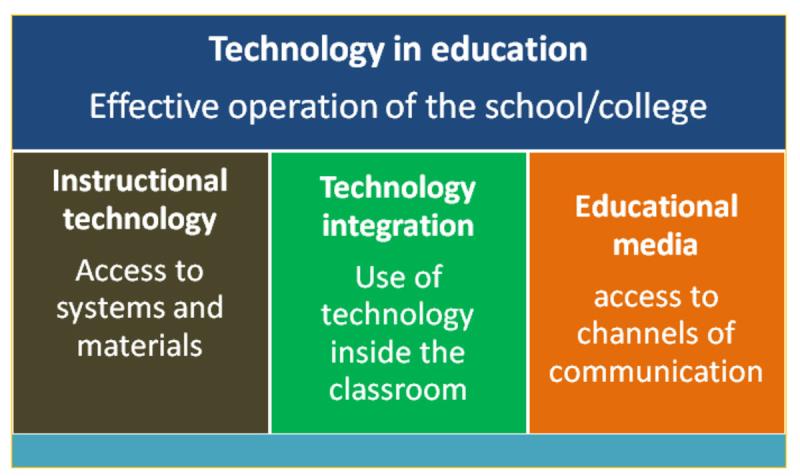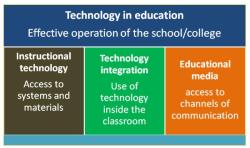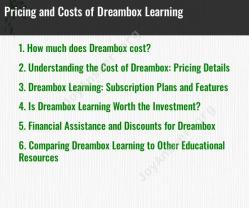What are the functions of educational technology?
Educational technology encompasses a wide range of tools, resources, and strategies designed to enhance and support the teaching and learning process. The functions of educational technology are diverse and continually evolving to meet the changing needs of learners and educators. Here are some key functions of educational technology:
Facilitating Learning:
- Educational technology provides tools and platforms that facilitate learning by making educational materials more accessible and engaging. This includes digital textbooks, multimedia presentations, and interactive simulations.
Enhancing Instruction:
- Teachers can use educational technology to enhance their instructional methods. This may involve incorporating multimedia presentations, interactive whiteboards, and educational software to create more dynamic and effective lessons.
Personalized Learning:
- Educational technology enables personalized learning experiences by adapting content and pacing to individual student needs. Adaptive learning platforms and intelligent tutoring systems are examples of technologies that support personalized learning.
Collaborative Learning:
- Technology fosters collaboration among students and educators. Online discussion forums, collaborative documents, and video conferencing tools facilitate communication and group projects, breaking down geographical barriers.
Assessment and Feedback:
- Educational technology supports various forms of assessment, including online quizzes, automated grading, and data analytics to track student progress. Immediate feedback through technology allows for timely intervention and adjustment of instructional strategies.
Access to Information:
- Technology provides students with access to vast amounts of information and resources. Online databases, digital libraries, and the internet enable learners to explore topics beyond traditional classroom resources.
Distance Education and E-Learning:
- Educational technology plays a crucial role in distance education and e-learning. Virtual classrooms, online courses, and webinars allow students to access educational content from anywhere, promoting flexibility and inclusivity.
Professional Development:
- Educators can use technology for their own professional development. Online courses, webinars, and collaborative platforms help teachers stay updated on educational trends, instructional strategies, and new technologies.
Interactive Simulations and Virtual Reality (VR):
- Educational technology provides interactive simulations and virtual reality experiences that allow students to explore complex concepts in a more immersive and hands-on way, enhancing understanding and retention.
Digital Citizenship and Media Literacy:
- Educational technology helps teach students about responsible and ethical use of digital tools. It promotes media literacy skills, helping students critically evaluate information sources and navigate the digital landscape safely.
Administrative Efficiency:
- Educational technology is used for administrative tasks such as record-keeping, communication with parents, and managing educational resources. Learning management systems (LMS) streamline administrative processes.
Inclusive Education:
- Technology supports inclusive education by providing tools and resources that cater to diverse learning needs. Accessibility features, assistive technologies, and adaptive software contribute to creating inclusive learning environments.
Gamification and Educational Games:
- Gamification elements and educational games make learning more engaging and enjoyable. These tools leverage game-like features to motivate students and enhance their learning experiences.
Research and Data Analysis:
- Educational technology facilitates research and data analysis in the field of education. Researchers can use data analytics to study learning patterns, assess the effectiveness of interventions, and make informed decisions.
Global Learning Connections:
- Technology enables global connections and collaborations between students and educators from different parts of the world. Virtual exchange programs, collaborative projects, and online platforms promote cross-cultural understanding and communication.
As technology continues to advance, its role in education will likely expand, offering new opportunities and challenges. The effective integration of educational technology requires thoughtful planning, ongoing professional development, and a commitment to leveraging these tools to enhance teaching and learning outcomes.
What roles does educational technology serve?
Educational technology (EdTech) plays a crucial role in modern education, serving various roles that enhance teaching and learning. Here are some key functions of EdTech:
1. Enhancing Learning Experiences:
- Interactive and engaging: EdTech tools like simulations, virtual reality, and gamification can make learning more interactive and engaging, promoting deeper understanding and retention.
- Personalized learning: Adapting to individual learning styles and paces, EdTech allows educators to tailor instruction and provide students with personalized learning experiences.
- Accessibility and equity: EdTech tools can bridge geographical and physical barriers, making education more accessible and equitable for students with diverse needs.
2. Supporting Educators:
- Automation and efficiency: EdTech tools can automate administrative tasks, such as grading and recordkeeping, freeing up educators' time to focus on more personalized instruction and student support.
- Collaboration and communication: EdTech platforms facilitate collaboration and communication between teachers, students, and parents, fostering a connected learning community.
- Assessment and data analysis: EdTech tools provide educators with data-driven insights into student progress and learning needs, allowing for more informed instruction and intervention strategies.
3. Expanding Learning Opportunities:
- Global access to resources: EdTech connects students with a vast array of educational resources and information beyond the classroom walls, opening doors to global perspectives and diverse learning opportunities.
- Lifelong learning: EdTech platforms provide flexible and accessible learning options for individuals of all ages and backgrounds, supporting lifelong learning and skill development.
- Promoting creativity and innovation: EdTech tools can empower students to be creative and innovative thinkers, encouraging them to experiment, explore, and solve problems in new ways.
4. Optimizing Educational Systems:
- Data-driven decision making: EdTech data can inform educational policies, resource allocation, and curriculum development, leading to more effective and efficient educational systems.
- Professional development for educators: EdTech platforms provide opportunities for educators to engage in professional development and acquire new skills in integrating technology into their teaching practices.
- Improving educational outcomes: By addressing the diverse needs of learners and enhancing teaching practices, EdTech has the potential to improve learning outcomes and educational achievement for all students.
Overall, EdTech plays a transformative role in modern education by enhancing learning experiences, supporting educators, expanding learning opportunities, and optimizing educational systems. As technology continues to evolve, its impact on education is expected to grow even stronger, shaping the future of learning for generations to come.



